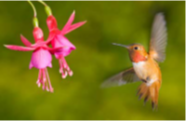- Escambia County Public Schools
- Biology End of Course Review
- SC.912.L.15.13 Natural Selection
Science
Page Navigation
- Home
- Elementary Science Curriculum
-
Biology End of Course Review
- Biology EOC Review
- SC.912.N.1.1 Scientific Method
- SC.912.L.18.12 Properties of Water
- SC.912.l.18.9 Photosynthesis and Cellular Respiration
- SC.912.L.18.1 Macromolecules
- SC.912.L.16.17 Mitosis and Meiosis
- SC.912.L.16.3 DNA Replication
- SC.912.L.14.3 Cell Structure
- SC.912.L.14.1 Cell Theory
- SC.912.L.17.20 Human Impact
- SC.912.L.17.9 Food Webs and Energy Transfer
- SC.912.L.17.5 Population Size
- SC.912.L.16.13 Reproductive System
- SC.912.L.16.10 Biotechnology
- SC.912.L.14.52 Immune System
- SC.912.L.14.36 Cardiovascular System
- SC.912.L.14.26 The Brain
- SC.912.L.14.7 Plant Structure
- SC.912.L.16.1 Genetics
- SC.912.L.15.13 Natural Selection
- SC.912.L.15.8 Origin of Life
- SC.912.l.15.6 Classification
- SC.912.L.15.1 Evolution
SC.912.L.15.13 Natural Selection
ORGANISMS, POPULATIONS AND ECOSYSTEMS
CLASSIFICATION, HEREDITY AND EVOLUTION
WHAT YOU NEED TO KNOW
-
- You need to know the conditions required for natural selection to occur. These include: overproduction of offspring, inherited variation, and the struggle to survive, which result in differential reproductive success.
- You need to understand genetic drift and gene flow.
- You need to know how mutation and genetic recombination increase genetic variation.
EXAMPLE ONE
-
Over time, the climate of an island became drier, which resulted in changes to the populations of various island finch species. Finch populations with a certain beak shape thrived, while those not having that beak shape decreased. Which of the following describes a necessary condition for these changes in the finch populations to occur?
A. fewer mutations
B. limited food resources
C. limited beak variations
D. overproduction of offspring
EXAMPLE TWO
-
Which of these would have the least effect on natural selection in a subspecies of giraffes that is geographically isolated from other subspecies of giraffes?
A. available niches
B. existing predators
C. chromosome number
D. available food resources
EXAMPLE THREE
-
Mutations within a DNA sequence are
A. natural processes that produce genetic diversity
B. natural processes that always affect the phenotype
C. unnatural processes that always affect the phenotype
D. unnatural processes that are harmful to genetic diversity
EXAMPLE FOUR
-
Which of the following best illustrates natural selection?
A. An organism with favorable genetic variations will tend to survive and breed successfully.
B. A population monopolizes all of the resources in its habitat, forcing other species to migrate.
C. A community whose members work together utilizing all existing resources and migratory routes.
D. The largest organisms in a species receive the only breeding opportunities.
EXAMPLE FIVE
-
A small population of chimpanzees lives in a habitat that undergoes no changes for a long period. How will genetic drift probably affect this population?
A. It will accelerate the appearance of new traits.
B. It will promote the survival of chimpanzees with beneficial traits.
C. It will increase the number of alleles for specific traits.
D. It will reduce genetic diversity.
EXAMPLE SIX
-
A small portion of the population that is geographically isolated from the rest of the population runs the risk of decreased.
A. genetic drift
B. mutation rate
C. natural selection
D. genetic variation
EXAMPLE SEVEN
-
In his book On the Origin of the Species, Charles Darwin described how species change over time. Which of the following is NOT part of his observations that describes the mechanisms of natural selection?
A. Organisms produce more offspring than can survive.
B. Disease and natural disaster will limit population growth.
C. Species today descended with modifications from ancestral species.
D. Organisms with advantages will survive and reproduce.
EXAMPLE EIGHT
-
Theodosius Dobzhansky discovered that successful species tend to have a wide variety of genes that do not appear to be useful to the species in its present environment. What did this discovery help explain about genetics and the changes that occur in a species over time?
A. Environments with more organisms tend to have more successful species.
B. Species with greater genetic diversity adapt more easily to changing environments.
C. Changing environments prevent species from adapting and surviving.
D. Species in a stable environment are more resistant to a changing environment.
INTRODUCTION TO NATURAL SELECTION
HOW DOES EVOLUTION REALLY WORK?
NATURAL SELECTION AND THE OWL BUTTERFLY
WHAT IS NATURAL SELECTION
GENETIC DRIFT
5 FINGERS OF EVOLUTION
IN YOUR BOOK
-
General Biology - Chapter 11, pg. 326
Honors Biology - Chapter 17, pg. 404


